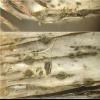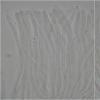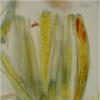
17-12-2025 18:35
 Michel Hairaud
Michel Hairaud
Bonjour à tous/Hi to everyone I am passing along

15-12-2025 15:48
 Danny Newman
Danny Newman
Melanospora cf. lagenaria on old, rotting, fallen

15-12-2025 15:54
 Johan Boonefaes
Johan Boonefaes
Unknown anamorph found on the ground in coastal sa

15-12-2025 21:11
 Hardware Tony
Hardware Tony
Small clavate hairs, negative croziers and IKI bb

15-12-2025 07:09
 Danny Newman
Danny Newman
indet. Rutstroemiaceae sp. on unk. fallen leavesMc

15-12-2025 07:05
 Danny Newman
Danny Newman
Pseudosclerococcum golindoi (det: Zotto)near Cosb

15-12-2025 11:49
 Danny Newman
Danny Newman
ITS sequences from the following two collections B

15-12-2025 12:34
 Danny Newman
Danny Newman
indet. Rhytismataceae on oak leafnear Purchase Roa
I found this ascomycete growing on stem of Equisetum arvense.
0.5 to 1 mm are the measured to ascomata.
The spores have numerous septa (I counted to 11). They have one rounded apex and the other pointed. They are straight or slightly curved.
The paraphyses are multiseptadas, x 2.3-3um wide, and with the apex slightly swollen (to 4um).
Asci and paraphyses present a species of gel that keeps together by the apex.
I do not have a key to the genera of Rhytismataceae, but looking at the literature that I have, I think it could be Naemacyclus. At first I thought of N. caulium but both the spore size as the asci is significantly higher. I've seen that those sizes would fit better with N. lamberti, but I haven't a clear description of the species.
Can anyone help?
a greeting
Susana

The asci are not inamyloid: I see a faint red reaction on the ascus wall. If you view when the Lugol comes in contact with the hymenium then you should see a faint blue front before all turns red.
More instructiv is to pretreat with KOH. Afterwards you will get a blue hymenium.
Equisetum seems a very exceptional substate for the species, but it is actually plurivorous, including ligneous hosts.
Zotto

These Karstenia species are not at all easy, and I feel there are more species hidden behind my images. My drawing Karstenia macer, HB 6113.JPG looks microscopically like yours. The apothecia have black lobes but your fungus is also somewhat dark, isn't it?
So maybe K. macer would be a better choice.
Zotto
Con Karstenia macer encaja perfectamente.
Si, mis ascomas también tienen el margen ennegrecido.
Gracias de nuevo.
Susana





